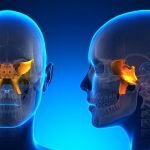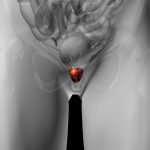Mark Swanson, ND
It is with great honor and pleasure to have Daniel Sindelar, DMD, as my interview guest for this segment of The Expert Report. Dr Sindelar earned his dental degree at Washington University School of Dental Medicine in 1981. He is a practicing dentist and one of the foremost experts in oral-systemic health promotion. He is a co-founder, recent president, and current board member of the American Academy for Oral Systemic Health (www.AAOSH.org). He has earned preceptorship certification by participating with cardiologists in the prevention of heart attack, stroke, and diabetes. A passionate advocate of oral-systemic health, he has developed online video educational systems on adopting an oral-systemic training for healthcare professionals. He is the author of Refresh Life, a book on the importance of oral health on overall health and well-being, and is regularly interviewed by local and national radio shows and print news outlets. He has written for various dental publications, lectured at major healthcare conferences, and has been featured in several cover stories in Dental Economics. Dr Sindelar has a passion for improving and caring for smiles, as well as helping his patients and the general public understand the important link between oral health, cardiovascular disease risk, and overall well-being.
In overall health care, how did the mouth become separate from the rest of the body?
Dr Sindelar: Until recently, oral care was perceived as being a long-term health problem with very little cost to putting it off for the short term. There wasn’t much communication or referral between the dental and medical communities. A surge in recent research is changing that. It is bringing to light an indisputable truth: oral health has become a necessary and integral part of preventive cardiology, a substantial adjunct to diabetic care, and a major part of the prevention of any inflammatory disease. Oral health belongs alongside diet and nutrition, physical activity, stress management, tobacco cessation, and sleep as a pillar of wellness because, like these essential aspects of health, it plays a large part in the prevention and management of these chronic conditions. It’s a very big piece in a complex puzzle.
How does oral inflammation link to systemic inflammation in the heart vessels and diabetes?
Dr Sindelar: Oral inflammation is shown to have a huge effect on overall inflammatory disease, and its elimination is not only helpful but being demanded by the medical community.
Oral inflammation, the body’s response to any problem in the mouth, shows up not only in periodontal disease, which, according to the American Academy of Periodontology, afflicts nearly 80% of the US adult population and is the most common inflammatory disease in humans. Also, factors such as abscessed teeth, oral cancers, poor habits, partially erupted third molars, crowding, and caries play a key role in increasing inflammatory burden. The mouth is the portal of entry for most of the pathogenic bacteria that affect our health, and a location for potential infections that affect us adversely. Oral inflammation results in an inflammatory response, the byproducts of which can and do spread throughout the body to influence all inflammatory diseases found in human beings – the major inflammatory ones being heart disease and diabetes.
The Bugs Matter!
How does bacteria get from the mouth into the system and cause systemic inflammation?
Dr Sindelar: To simplify the path, we have essentially 3 portals of entry1,2:
1. Invasion of gram-negative bacteria through epithelial lining of periodontal pockets
2. Effects from the circulating toxins of periodontal pathogens
3. Inflammation caused by the immunologic response to the pathogens and their toxins
In other words, bad bacteria enter us through periodontal pockets, they release toxins into our systems, and our own bodies set off an inflammatory response to both of the above. The bugs matter!
Can you share some oral-systemic study highlights?
The Heart Attack Connection
Dr Sindelar: In a study published in the American Heart Association’s Circulation in March of 2013, the bacterial signatures in thrombus aspirates of patients with heart attacks were evaluated. Bacteria associated with periodontal disease, caries (cavities), and periapical abscesses (abscessed teeth) are directly connected and found in the thrombus of each person who had suffered a heart attack. The study concluded that up to 50% of the heart attacks were triggered by oral bacteremia.3 This basically is saying that it appears that up to half of all heart attacks in the United States are triggered by oral pathogens!
The Carotid Artery Intima-Media Thickness Connection
Another study, published in the Journal of the American Heart Association in 2013, found that by improving clinical and microbial periodontal disease, there is a decreased rate of carotid artery intima-media thickness (CIMT).4 Bacterial burden is related to carotid intima-media thickness, and there are simple saliva tests to determine the presence of those microbial pathogens. Periodontal disease is no longer just being looked at. We now have the tools to address the microbial burden of oral biofilm and to assess the genetic variations of each individual. One example of how important oral biofilm is in reference to overall health is one particular oral pathogen, Porphyromonas gingivalis, which, when present, raises an individual’s risk for having a heart attack by 13.6 times.5 This is more than twice the risk of being a heavy smoker.6
The Stress-Cortisol Connection
And now we find out that stress plays an important role in the presence of P. gingivalis. In a study published in 2013 in the Archives of Oral Biology, the stress-related hormone, cortisol – one of the main molecules released during human stress response – was found in gingival crevicular fluid released around teeth.7 Most importantly, the excess cortisol release significantly increased P. gingivalis growth!
The Inflammation Biomarker Connection
• P. gingivalis is involved in forming oxidized LDL.8
• Levels of hsCRP are higher in periodontal disease patients.9 HsCRP levels are 7 times higher in people with periodontal disease.9 P. gingivalis elevation was independently associated with high serum CRP.9
• Periodontal disease is associated with elevated levels of Lp-PLA2 (lipoprotein-associated phospholipase A2).10 Lowering Lp-PLA2 also lowers periodontal inflammation.10 Treat periodontal disease and you can reduce Lp-PLA2 levels.11
What are some useful tests to consider?
Dr Sindelar: Salivary and blood spot diagnostics have become very useful, convenient, and cost effective, especially for dentists and other healthcare professionals who prefer not to use phlebotomy or urine collection. We can now screen less invasively to find the microbial burden, inflammation markers, gluco-insulin markers, genetic variations, and cortisol levels associated with inflammatory diseases like periodontal disease. For example, the Heart Smart Screen from SilverStaff Clinical Lab (www.Silverstaff.com) utilizes a simple finger stick blood spot test (no phlebotomy or urine collection required) to determine levels of hsCRP, HbA1c, and Lp-PLA2. Cleveland HeartLab ( www.ClevelandHeartLab.com) specializes in MPO (myeloperoxidase) testing. Other valuable tests are oxidized LDL and coenzyme Q10, and advanced lipid panels.
Fire in the Kitchen, Burning Down the House…
Dr Sindelar: One of my closest friends and colleague, the late Lloyd Rudy, MD – who, incidentally, was considered one of the most influential cardiovascular surgeons in cardiology – put it best when he compared the body’s inflammatory response to infection to a house fire. Inflammation is fire. When vascular walls around the heart catch fire, we have heart attacks and strokes. Think of the body as a house, and the mouth as the kitchen: When we have gum disease, we have a “fire” in our “kitchen” that just may “burn down the house.” We know that systemic inflammatory diseases that can be triggered by oral inflammation include cardiovascular disease, diabetes, kidney disease, Alzheimer’s disease, pneumonia, pre-term and low-weight births, and various cancers. If we view oral health as a major pillar of overall health, it becomes even more important for every individual to have a healthy mouth.
How can these health problems be addressed through oral-systemic healthcare delivery?
Dr Sindelar: We already have many ways to address most of these problems. The biggest difference right now in my eyes is that our work has a new purpose and we are able to customize care with different combinations of treatment. Personally, I approach each of my patients in a unique way that is based on the overall health risk factors they present in my office. It’s not just a dental checkup; it’s a total wellness exam that includes a traditional dental exam, microbial assessment, genetic testing, salivary diagnostics, and a health risk assessment. It is collaborated with their healthcare professionals – we communicate with them for various tests. There are tests that each of us can do, that bring a new level to total patient care. I have found high-quality, evidence-based nutraceuticals can play a key important role in combatting inflammation and improving my patients’ oral and systemic health.
…and the challenge, also, is that no 2 patients are exactly the same!
Dr Sindelar: Indeed correct! Some of them have diabetes, others have heart disease. Many will have both. It is time for the medical and dental communities to accept what the research has been telling us for years: oral health is a key player in overall health. There are new ways to approach each individual with customized care that matches their health risks and that can add new dimensions to our profession.
How can naturopathic physicians offer the systemic support that better aligns itself with the oral-systemic dental community?
Dr Sindelar: It’s time for a massive integrative healthcare front and naturopaths are at this forefront. There’s a predicted shortage of primary care physicians. We have an opportunity to incorporate advanced oral care. We need to take a multi-disciplinary, coordinated wellness approach, and get upstream from the problems. By reducing the effects of poor oral health on overall health, we can reduce healthcare costs by including advanced oral inflammation reduction. We now find ourselves in a place where we can pay more attention to our oral health and get a huge return on our overall health. Doing so will prevent and reduce the risks and complications of many diseases. Working together as part of the patients’ health team, we can actually add healthy years to our patients’ lives… and there’s nothing more important than living a healthy life.
What preventive message can you give patients here?
Dr Sindelar: Start off by doing the things you already do. Flossing is important, but it’s much more than that. And even if flossing was the cure, studies show only 3% of the population floss twice a day like they should. Doing this and having bi-yearly teeth cleanings with your dental hygienist is one of best bangs for the buck for the teeth and gums, but actually preventing serious illness down the road.
The Oral-Systemic Diseases of Inflammation
Can you comment briefly on heart disease, stroke, diabetes, and Alzheimer’s, when it comes to oral-linked risks?
Dr Sindelar: Diabetes and gum disease have a bi-directional relationship—that is to say, each can both contribute to and result from the other. If you have diabetes and get treated for gum disease, studies show your overall healthcare costs will go down while your quality of life increases.12
Heart disease and stroke are the leading causes of death and disability in the United States. Research from the University of North Carolina found that severe gum disease doubles risk for a fatal heart attack, and triples risk for stroke. Just 1 dental cleaning per year reduces risk for heart attack by 25%!13
Dementia and Alzheimer’s disease are 4 times more likely in individuals who have lost teeth to gum disease before age 35.14
Pregnancy complications are also more likely if a woman has gum disease while pregnant. Just a few years ago, a woman gave birth to a stillborn baby; the cause of death was determined to be a bacterium from the mother’s mouth. The scary part is that if you wait until you’re pregnant to seek treatment, your baby might still be affected.15
The patient take-home message is simple: If we want to live long, healthy lives, we must make our oral health a priority.
In relation to overall healthcare costs, where does oral bacteria-linked diseases fit in?
Dr Sindelar: Research has shown that nearly half of all healthcare expenses in the United States come from preventable chronic illnesses such as heart attacks (the #1 cause of death) and strokes (the #1 cause of disability). Oral biofilm-associated diseases surpassed heart disease as the #1 healthcare cost in 2006, according to a 2011 research article on oral biofilm-associated diseases,16 costing $45 billion in 1997, and escalating to $81 billion in 2006. I suspect these have continued to rise at the same alarming rate since 2006. These costs are primarily the increased costs for diagnosis and treatment of systemic diseases caused by untreated oral disease. Meanwhile, the American Academy of Periodontology reports that nearly 80% of the population has some form of gum disease. The Centers for Disease Control recently reported that over 50% have full-blown periodontal disease.17 Oral inflammation is one of the most common sources of inflammation in humans. It’s a huge health burden that’s entirely preventable!
Can you sum up our interview with an oral-systemic “clinical pearl”?
Dr Sindelar: Obviously, advanced oral care plays a key role in reducing the impact of oral inflammation on overall health. It is time to incorporate advanced home care systems and advanced wellness programs for the patients, to reduce the impact of oral pathogens on their overall oral-systemic health. Oral-systemic health is all about managing health care through a coordinated effort between integrative dental professionals and medical care providers.
Dr Swanson’s Closing Comments
Naturopathic physicians are a key component of the integrative team of oral-systemic providers. We have the assessment tools at our clinical laboratories and effective treatment options in our dispensaries. Our natural treatment options are “spot on” – targeting anti-inflammation, gluco-insulin modulation, lipid management, blood pressure, oxidative stress reduction, endothelial nitric oxide support, LOX-1 gene expression, microfloral immune responses, adiponectin, and cortisol balance – and serve as optimal intervention. Some research-based agents that come to mind are berberine, curcumin (Curcuma longa), resveratrol, CoQ10, alpha-lipoic acid, N-acetylcysteine, grape seed extract, lychee/green tea extract , Irvingia gabonensis, Rhodiola rosea, olive leaf, iso-quercetin, L-citrulline, magnesium, omega-3s, vitamin C and E, tocotrienols, B6, and niacin… and that’s only a partial list! I thank Dr Sindelar for this unique opportunity to discuss oral-systemic health care and how naturopathic physicians can help bridge the gap between the dental chair and the exam table. For more information on Dr Dan Sindelar, check his web site at www.oralheartcare.com.
 Mark Swanson, ND, writes “The Expert Report” column, which is featured in NDNR. Dr. Swanson has over 25 years experience as chief medical advisor, research and technical consultant, and products formulations expert to leading practitioner brand supplement manufacturers. He is a former associate editor for the American Journal of Naturopathic Medicine, national product director, and published researcher. He is a pioneer graduate of Bastyr University, 1984. Dr. Swanson has his private practice specializing in Preventics Care and Functional Medicine, in Sequim, Washington. Contact: [email protected]
Mark Swanson, ND, writes “The Expert Report” column, which is featured in NDNR. Dr. Swanson has over 25 years experience as chief medical advisor, research and technical consultant, and products formulations expert to leading practitioner brand supplement manufacturers. He is a former associate editor for the American Journal of Naturopathic Medicine, national product director, and published researcher. He is a pioneer graduate of Bastyr University, 1984. Dr. Swanson has his private practice specializing in Preventics Care and Functional Medicine, in Sequim, Washington. Contact: [email protected]
References
1. Li X, Kolltvei KM, Tronstad L, Olsen I. Systemic diseases caused by oral infection. Clin Microbiol Rev. 2000;13(4):547-558.
2. Iacopino AM. Periodontitis and diabetes interrelationships: role of inflammation. Ann Periodontol. 2001;6(1):125-37.
3. Pessi T, Karhunen V, Karjalainen PP, et al. Bacterial signatures in thrombus aspirates of patients with myocardial infarction. Circulation. 2013;127(11):1219-1228, e1-6.
4. Desvarieux M, Demmer RT, Jacobs DR, et al. Changes in clinical and microbiological periodontal profiles relate to progression of carotid intima-media thickness: the oral infections and vascular disease epidemiology study. J Am Heart Assoc. 2013;2(6):e000254.
5. Stein JM, Kuch B, Conrads G, et al. Clinical periodontal and microbiologic parameters in patients with acute myocardial infarction. J Periodontol. 2009;80(10):1581-1589.
6. Ziebolz D, Priegnitz A, Hasenfuss G, et al. Oral health status of patients with acute coronary syndrome–a case control study. BMC Oral Health. 2012;12:17.
7. Akcalı A, Huck O, Buduneli N, et al. Exposure of Porphyromonas gingivalis to cortisol increases bacterial growth. Arch Oral Biol. 2014;59(1):30-34.
8. Desvarieux M, Demmer RT, Jacobs DR, et al. Periodontal bacteria and hypertension: the oral infections and vascular disease epidemiology study (INVEST). J Hypertens. 2010;28(7):1413-1421.
9. Pejcic A, Kesic LJ, Milasin J. C-reactive protein as a systemic marker of inflammation in periodontitis. Eur J Clin Microbiol Infect Dis. 2011;30(3):407-414.
10. Mochari H, Grbic JT, Mosca L. Usefulness of self-reported periodontal disease to identify individuals with elevated inflammatory markers at risk of cardiovascular disease. Am J Cardiol. 2008;102(11):1509-1513.
11. Lösche W, Marshal GJ, Apatzidou DA, et al. Lipoprotein-associated phospholipase A2 and plasma lipids in patients with destructive periodontal disease. J Clin Periodontol. 2005;32(6):640-644.
12. Albert DA, Sadowsky D, Papapanou P, Conicella ML, Ward A. An examination of periodontal treatment and per member per month (PMPM) medical costs in an insured population. BMC Health Serv Res. 2006;6:103.
13. Chen ZY, Chiang CH, Huang CC, et al. The association of tooth scaling and decreased cardiovascular disease: a nationwide population-based study. Am J Med. 2012;124(6):568-575.
14. Gatz M, Mortimer JA, Fratiglioni L, et al. Potentially modifiable risk factors for dementia in identical twins. Alzheimers Dement. 2006;2(2):110-117.
15. Michalowicz BS, Hodges JS, Diangelis AJ, et al. Treatment of periodontal disease and the risk of preterm birth. N Engl J Med. 2006;355(18):1885-1894.
16. Beikler T, Flemmig TF. Oral biofilm-associated diseases: trends and implications for quality of life, systemic health and expenditures. Periodontol 2000. 2011;55(1):87-103.
17. Eke PI, Dye BA, Wei L, et al. Prevalence of periodontitis in adults in the United States: 2009 and 2010. J Dent Res. 2012;91(10):914-920.





